15 Smart Tips for Full-Time RVing on a Budget
As an Amazon Associate, we earn from qualifying purchases. We also earn from other affiliate websites. See our full disclaimer.
RVing can be a great way to travel and live more simply, and you CAN do it on a budget. The key to full-time RVing on a budget is finding opportunities to stretch your money and make it last as long as possible.
You might already know that some of the big RV monthly expenses include campsite fees, fuel, and maintenance. These costs can skyrocket (especially for newbie RVers) if you don’t know some of the tricks to save money and keep your budget in check.
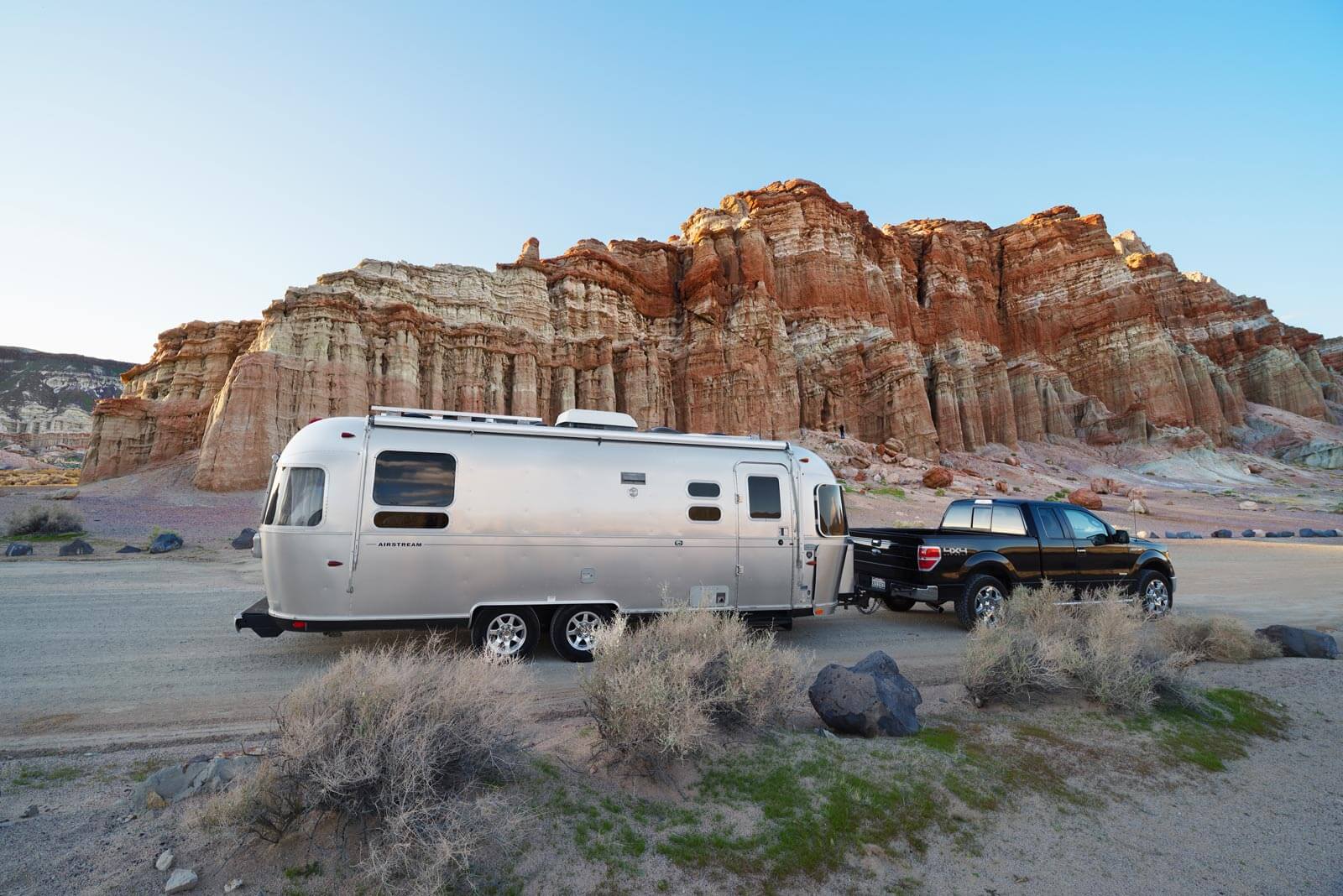
After four years of full-time RVing on the cheap, I’ve put together 15 smart tips to help you find the best deals and save the most money in these areas to maximize your RV budget.
What is a Good Budget for Full-Time RV Living?
The cost of full-time RV living can be as expensive or as budget-friendly as you need. On the high end, you can choose to park at luxury RV resorts in popular destinations, and enjoy dining out, and paid activities. On the other end of the spectrum, you can spend most nights boondocking for free, enjoy meals at the campsite by the fire, and travel slower to save on fuel costs.
By planning ahead and watching your spending, you can RV for as little as $2,000 a month or less. However, most people live somewhere between the two scenarios above and travel on a budget between $3,000 and $5,000 a month.
Here are tips to help you hit your target budget and get you out on the road!
1. Find Free or Cheap Camping Spots
The cost of camping spots can be one of the biggest line items in an RV budget. Research and planning ahead will help you secure the best deals.
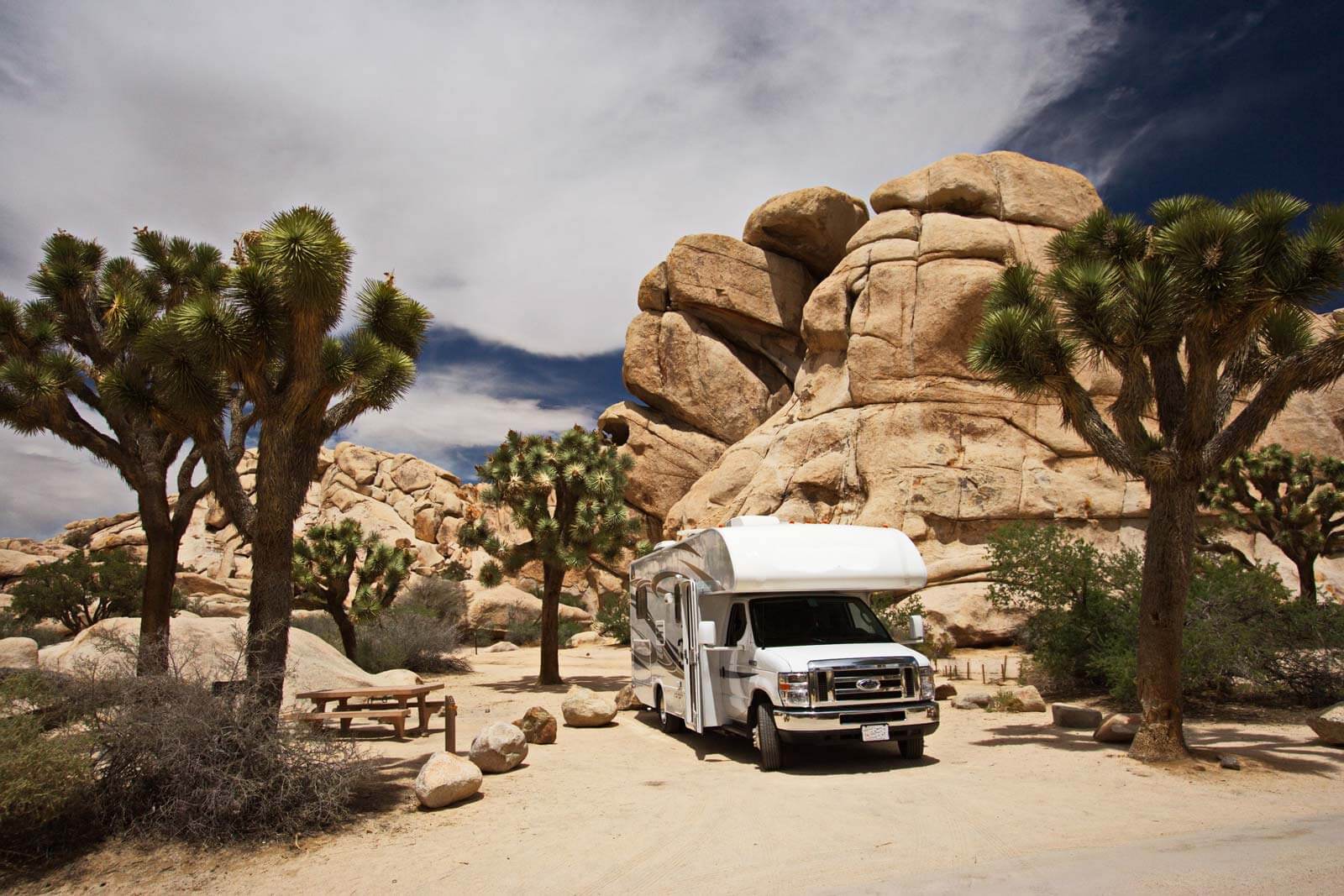
Here are five options for reducing RV living costs for camping spots.
- Sign up for campground discount memberships such as the Thousand Trails membership or Passport America to save huge on camping spots and even camp for free.
- Utilize discounts from AAA and Good Sam. Most campgrounds have a 10% discount for one of these programs.
- Take advantage of Cracker Barrel, Walmart, Bass Pro Shops, and Cabela’s for free overnight RV parking when traveling long distances.
- If you are in one state for an extended period, look into the state park pass. Some state passes offer significant discounts for camping in their parks, such as Texas, Nevada, and New Mexico. You can also find camping discounts for residents, seniors, and the military.
- Consider booking a site with few or no hookups (there is usually a discount associated with these sites), this is a great way to save while still enjoying the benefits of a campground.
For more information on the cost of camping sites, check out What Is The Average Cost Of Camping from the Let’s Travel Family.
2. Moochdocking
When you moochdock in your RV, you park at a residential house or other private property where you have permission to park your RV.
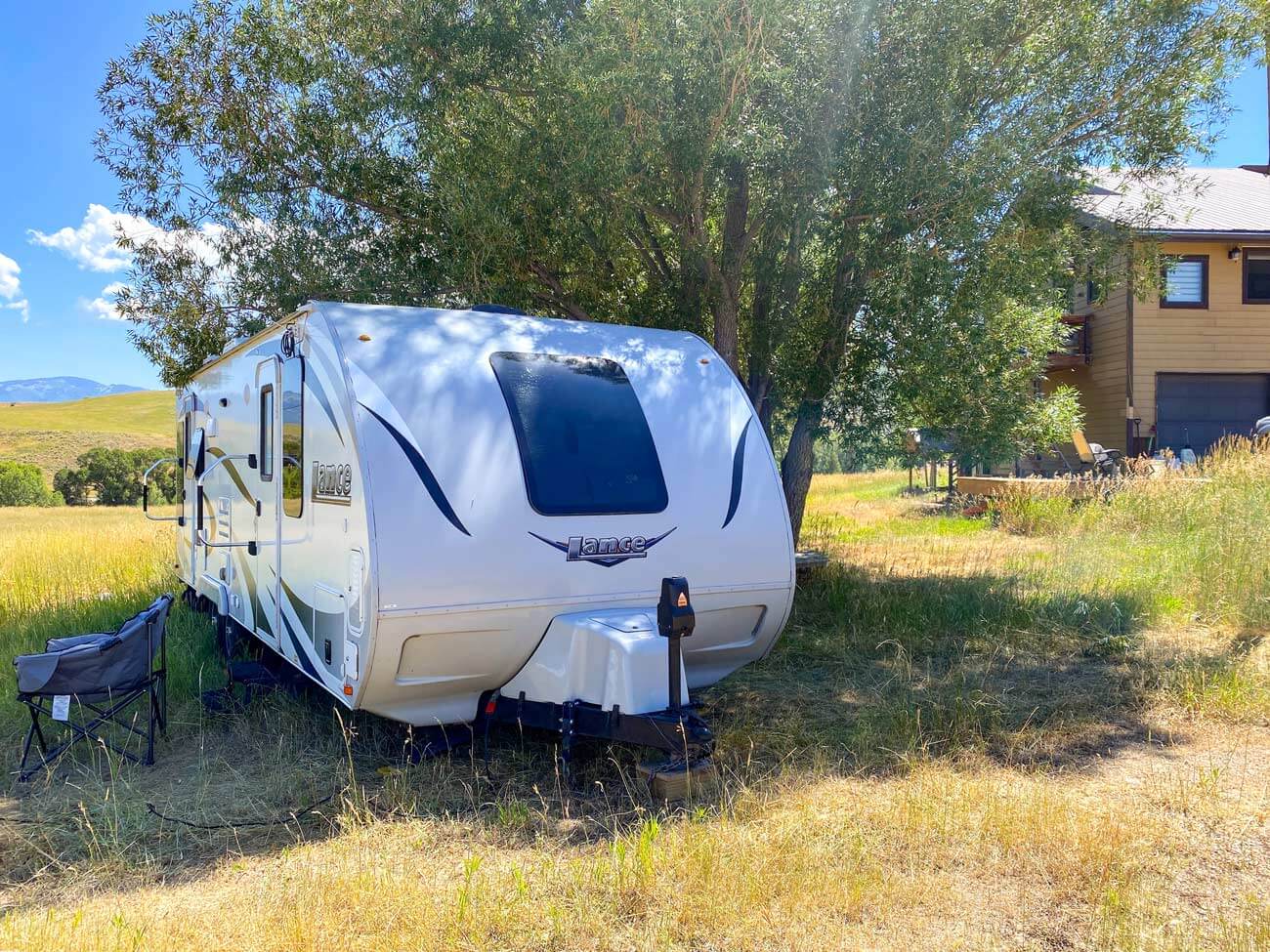
Moochdocking is a great affordable way to RV camp, and it’s a great way to visit with family or friends.
There are also moochdocking membership clubs like Boondockers Welcome and Harvest Hosts. These memberships allow you to pay an annual membership fee for access to thousands of moochdocking sites that you can book around the country.
READ NEXT: For more on moochdocking, check out our full post What is Moochdocking? Free Camping & How to Do It Right.
3. Workamping
Workamping (work camping) is a term for staying and working at campgrounds. It allows you to save money on campsites by providing work hours in exchange for free or reduced-rate camping fees. You may also be paid for work depending on the contract or offer.
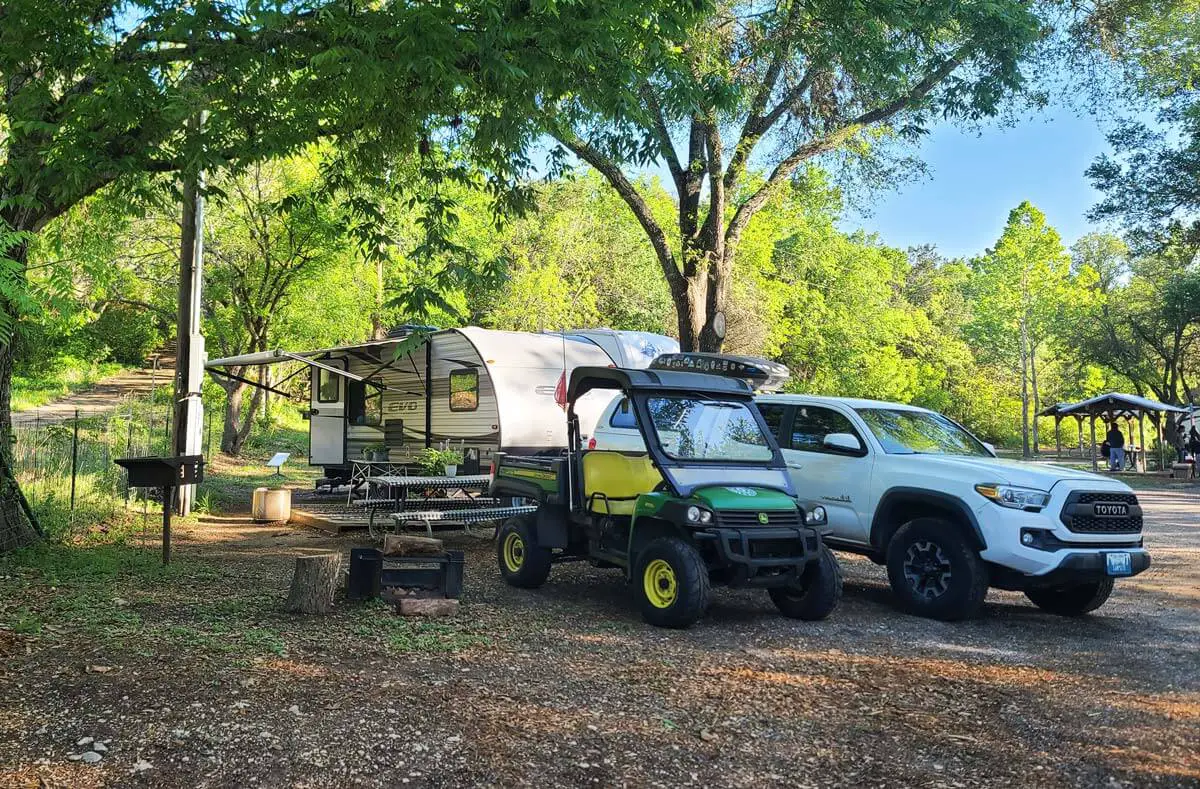
Here are a few resources to learn more about workamping.
- Workamping Jobs Facebook page – this Facebook page features job ads and information on workamping
- Workamper News site – this is a paid newsletter with job ads but could be worth it if you are serious about workamping
- Follow Chasing the Cashes on Instagram – this couple travels full-time in their RV, workamping along the way, and they share a lot of great info
Workamping can be a great way to minimize full-time RVing costs while making a little extra money too!
READ NEXT: For the full guide to workamping, check out our post Workamping Jobs: The Best Work Camping for RVers in 2025.
4. Extend Your Stay
Staying at RV campgrounds for a week or month at a time is a great way to save money.
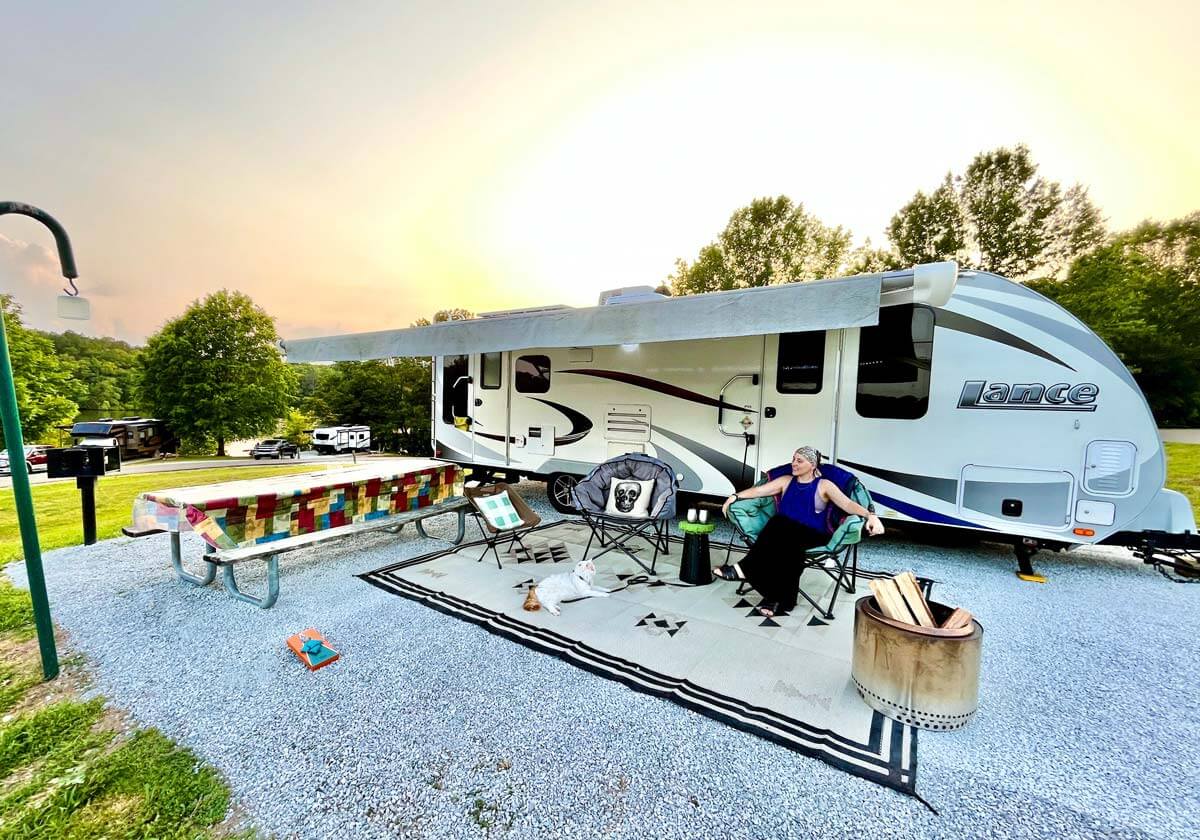
Most private and resort campgrounds have a discounted rate for more extended stays, including weekly and monthly rates. Some will even have seasonal rates, allowing you to save even more if you travel slower.
Extending your stay will also keep more fuel in your tank, allowing you to budget for less. Exploring one state or area over the course of a couple of months instead of a couple of weeks is a great way to RV on a small budget.
5. Avoid Peak Season
Avoiding peak season at RV destinations is another good way to save on campground fees.
In places like Florida, traveling in the summer can mean large savings compared to winter rates. If you can book travel on the edge of the peak seasons, you can usually take advantage of discounted rates and still have a shot at decent weather.
Even if you can’t (or don’t want to) avoid peak season, try to avoid holidays and holiday weekends in popular destinations. This could mean an increased rate at the campgrounds.
Check RV campground websites for their seasonal pricing and plan accordingly.
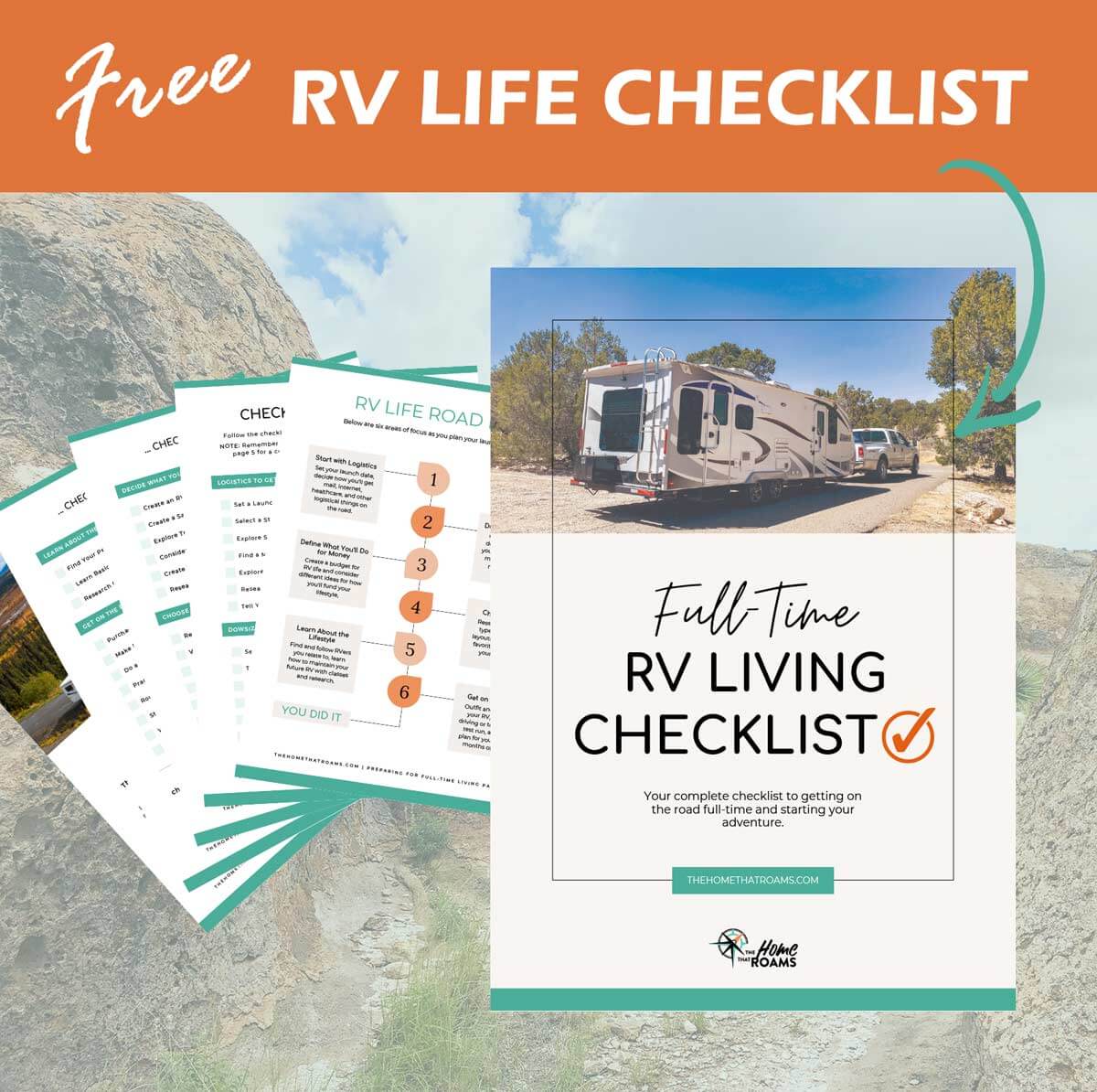
Your Guide to Launching RV Life
Road Map & Checklist – Start Now!
Unsubscribe at any time. View our privacy policy.
6. Boondocking
When you’re going full-time, boondocking is one of the best ways to save money on campsites, and it’s a great way to get out in nature and enjoy the RV lifestyle.
When you boondock, you are camping on public lands, such as BLM, without hookups or any amenities.
Of course, the huge plus to camping this way is the ‘free’ price tag, but it’s also a nice way to enjoy the outdoors and get away from the crowds.
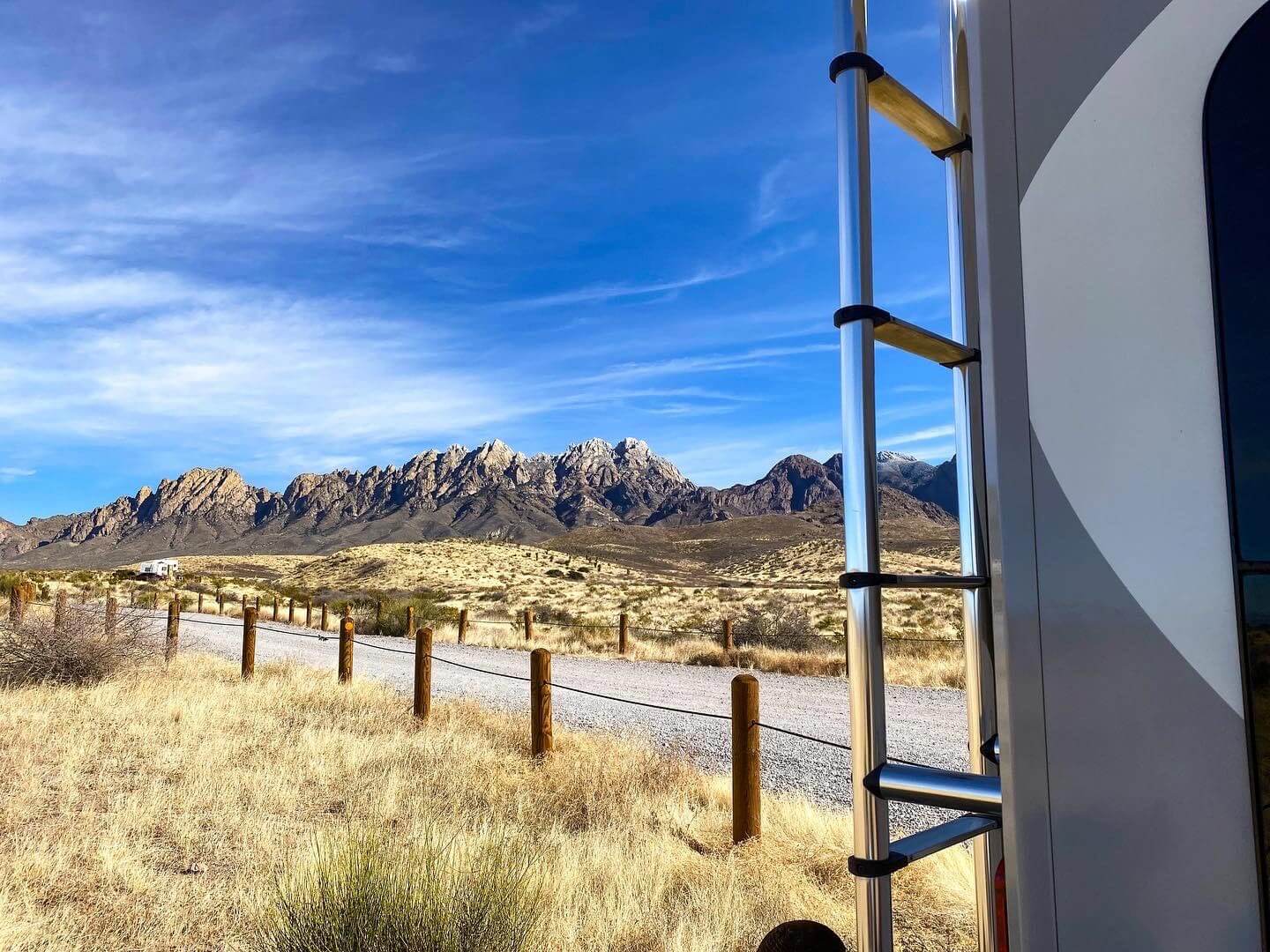
We like to boondock or dry camp for about a week at a time and then head to the campground for a night or two to dump the tanks, catch up on cleaning and laundry, and enjoy a long shower!
If you think boondocking sounds like a great way to camp on a budget, consider this camping style when choosing an RV to purchase.
You’ll want to look at these features when choosing an RV for boondocking:
That said, many newbie RVers can get caught up looking at larger solar and battery bank setups that can cost upwards of $10K.
If you’re willing to go without a few amenities, you can boondock on small portable solar setups and still make it work. (Also, see #7.)
PRO TIP: For shorter boondocking stays, purchase a portable solar generator with solar panels (Jackery and Bluetti have good ones) that you can use without any installations.
7. Chase 70-Degrees
Many of the struggles with boondocking for more extended stays stem from not having a sufficient solar system and battery bank to run an air conditioner.
By traveling with the seasonal weather changes, you can dry camp and boondock without the need for AC.
Dry camping will allow you to reap the benefits of a ton of savings on campground fees.
As a bonus, cooler, more comfortable temps mean less sweating and less need for showering. Minimizing showering can help tremendously in stretching your water resources while dry camping.
READ NEXT: For more on dry camping and how to successfully camp without hookups, check out our guide to dry camping.
8. Plan Ahead When Filling Up Your Gas Tank
It’s easy to pull into the most convenient gas station and fill up your tank, but simply planning ahead can save you money on fuel.
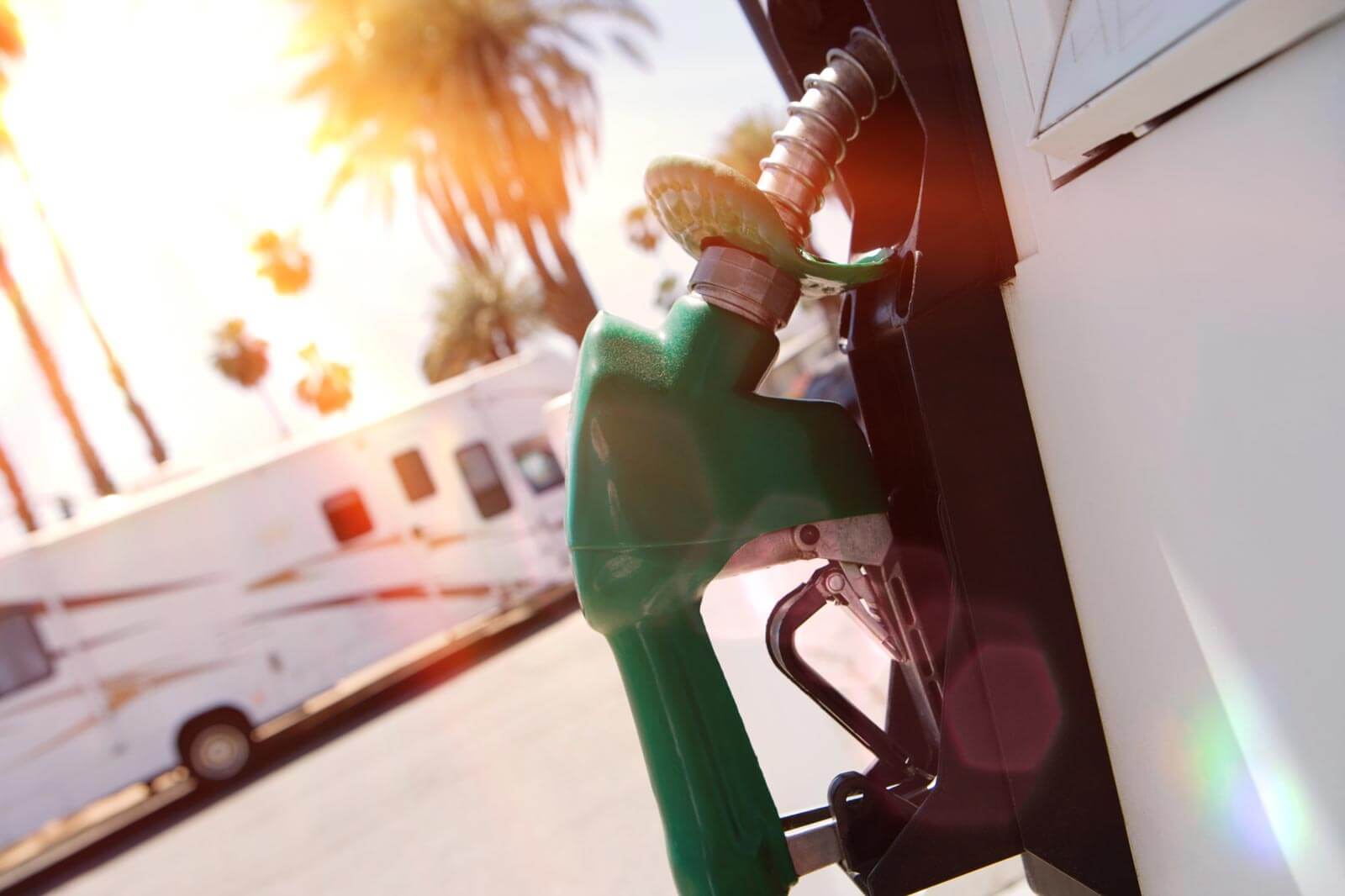
Here are a few ways to find the best deals on fuel for your RV or tow vehicle.
- Use GasBuddy to research gas prices on your route and find the best deal.
- Plan to fill up in states where gas is cheaper.
- Carry jerry cans to take advantage of when you find great fuel prices.
Remember to do other simple things to get the best fuel efficiency. Ross and I use a tire pressure monitoring system to ensure the right amount of air in our RV and truck tires. We also drive a steady 60 – 65mph on the interstate for the best fuel mileage.
I also use an RV gas cost calculator to budget accordingly for fuel expenses on our big RV trips.
9. Fuel Discount Cards & Loyalty Programs
Gas discounts and credits for your motorhome or tow vehicle are a great way to maximize your budget for this significant RV monthly cost.

Here are a few tips to save money when filling up your RV.
- If your RV or tow vehicle is diesel, a fuel discount program such as Open Roads (formally TSD Logistics) will get you good discounts on diesel fuel at the pump.
- Use a credit card that offers a percentage back at gas stations (we get 5% back with our Citi Custom Cash card).
- Sign up for loyalty programs with gas stations and receive discounts at the pump.
I recommend using multiple methods, also known as “stacking” discounts, to get the maximum savings on fuel.
READ NEXT: Check out more tips for fuel saving for RV owners and our complete guide to saving at the pump.
10. Electrical Appliances Instead of Propane
Traveling full-time in colder locations can lead to massive increases in propane expenses.
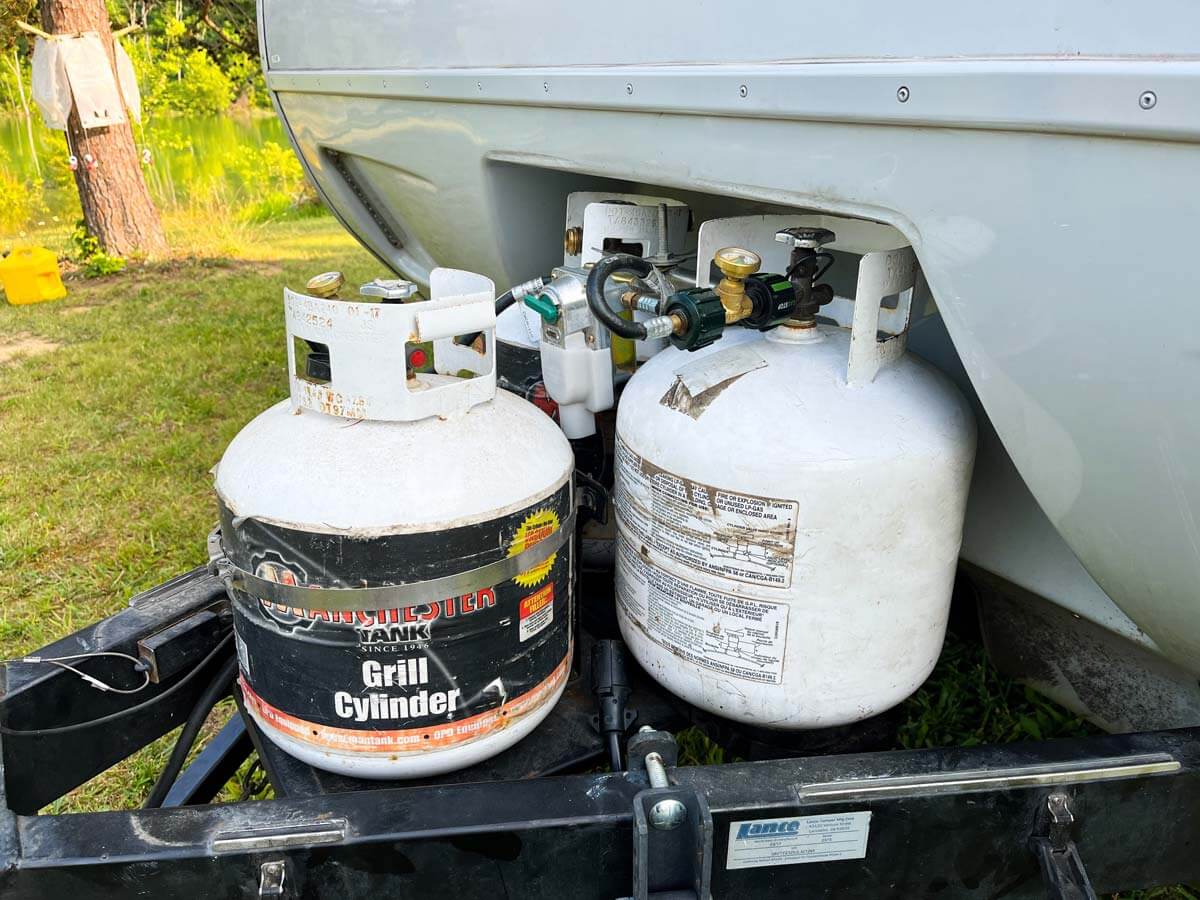
When your RV is hooked up to shore power at a campground or park, take advantage!
- Use an electric kettle to heat up water for coffee or cooking needs.
- Use an electric space heater to stay warm instead of your RV’s ducted heat system that runs on propane.
- Use an electric blanket at night to keep warm in bed.
- Turn your fridge to electric power (if you have a two-way absorption fridge).
- Use a portable electric induction cooktop instead of a propane stove.
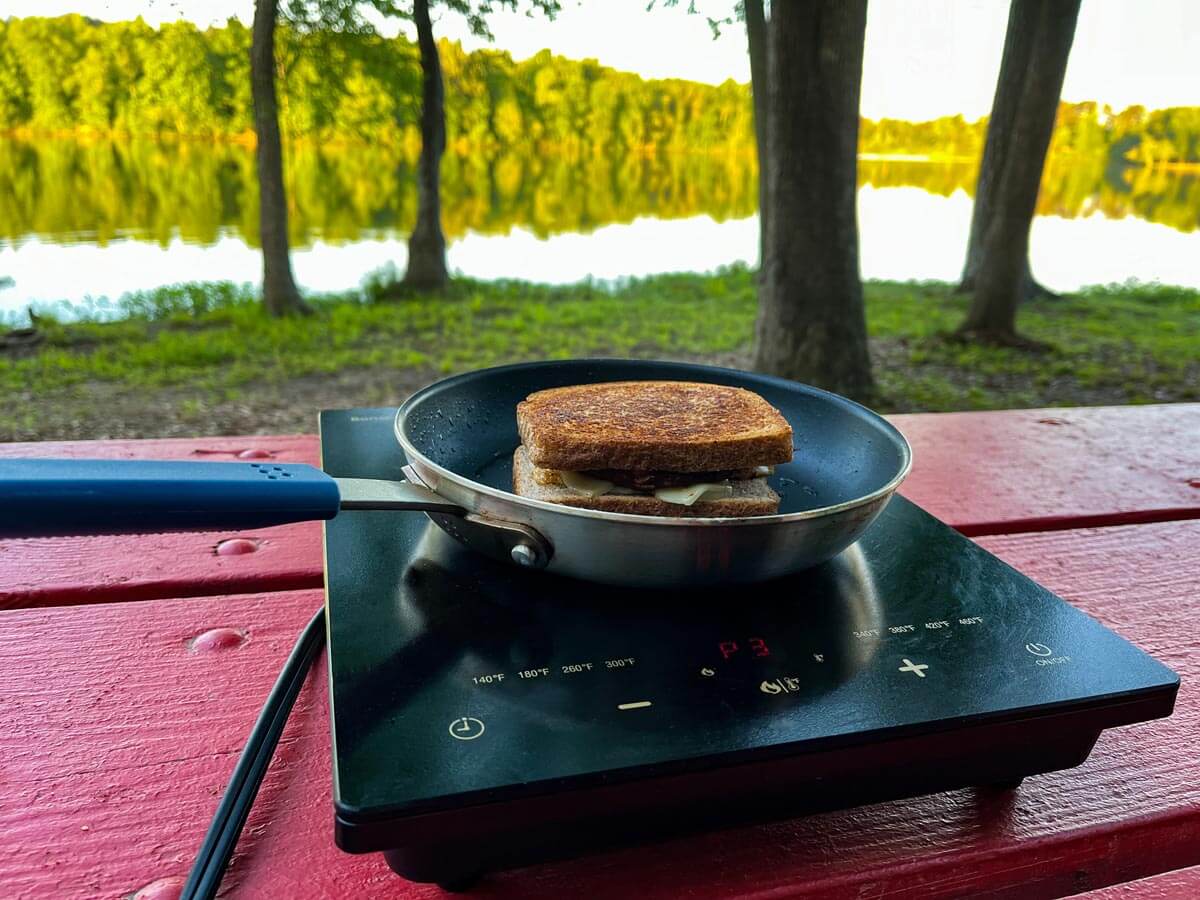
These little adjustments can really stretch your propane resources, especially if you find more creative ways to keep your RV warm.
PRO TIP: Electrical heat is better for controlling mold in an RV than your propane system which adds moisture to the air and causes mildew.
11. Invest in a Water Filter
Buying bottled water can get expensive while traveling in an RV, and the inline hose filters you pick up at Walmart don’t always create safe drinking water.
Investing in an advanced water filter allows you to feel good about drinking water straight from your RV water line or tank.
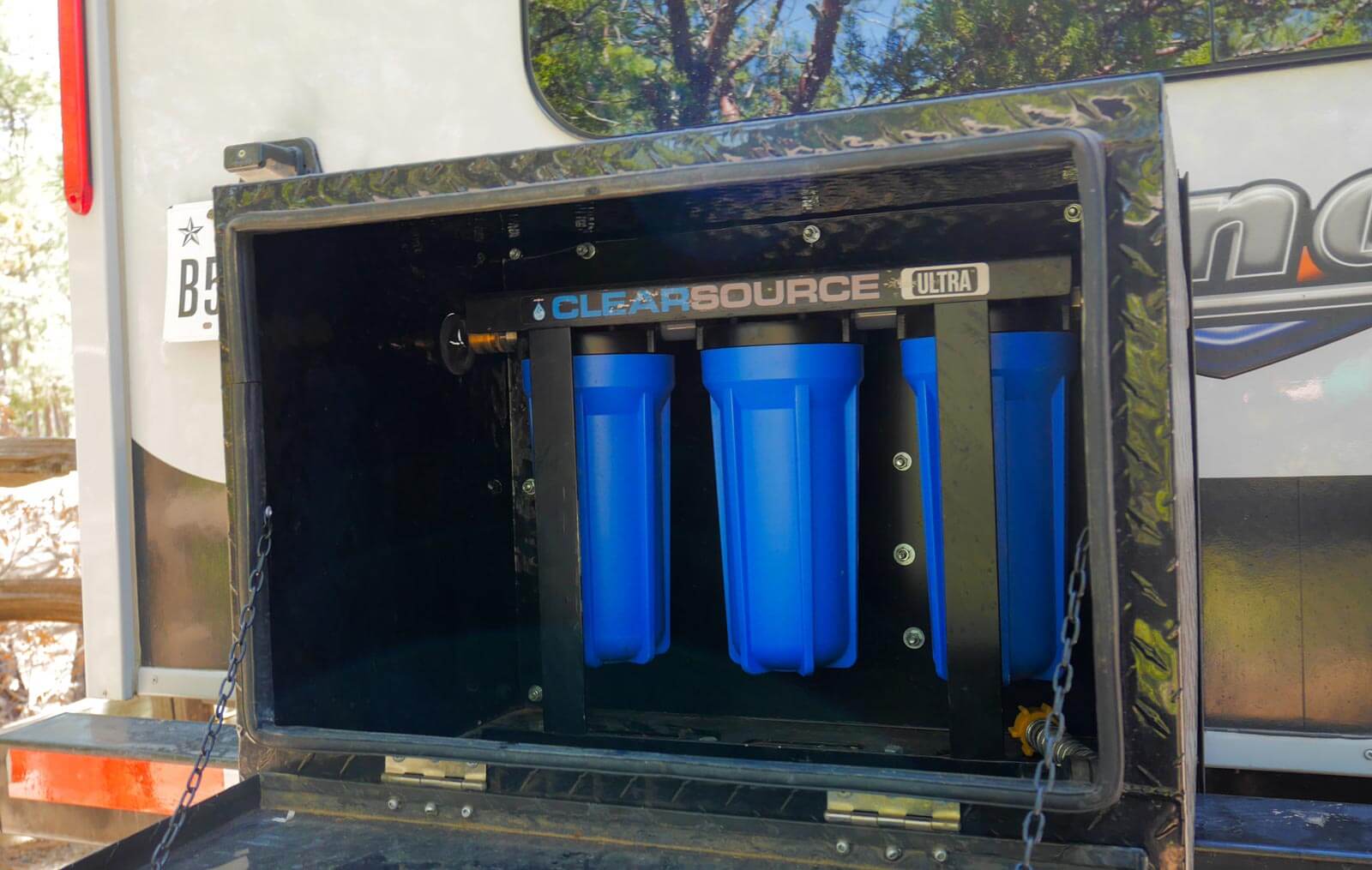
Here are a few water filtering options that will save you money in the long run on bottled water.
- Acuva ArrowMAX Water Purifier – this UV-LED water disinfection system is mounted under your kitchen sink and filters water between the RV tank and the kitchen faucet (for 10% off, use discount code: thehomethatroams10)
- Clearsource Ultra™ RV Water Filter System with VirusGuard™ Protection – this water filter is an advanced inline system that filters water between the water spigot and your tank (or RV pumping system)
- Berkey Gravity-Fed Water Filter – this filter sits on your RV counter and filters the water that is added to the chamber (the RV community loves this one)
HOW WE FILTER WATER: Ross and I rely on a combination of the Clearsource filter system shown above and Acuva’s system to ensure water is filtered before it enters our RV water tank and then purified right before it goes into our drinking glass.
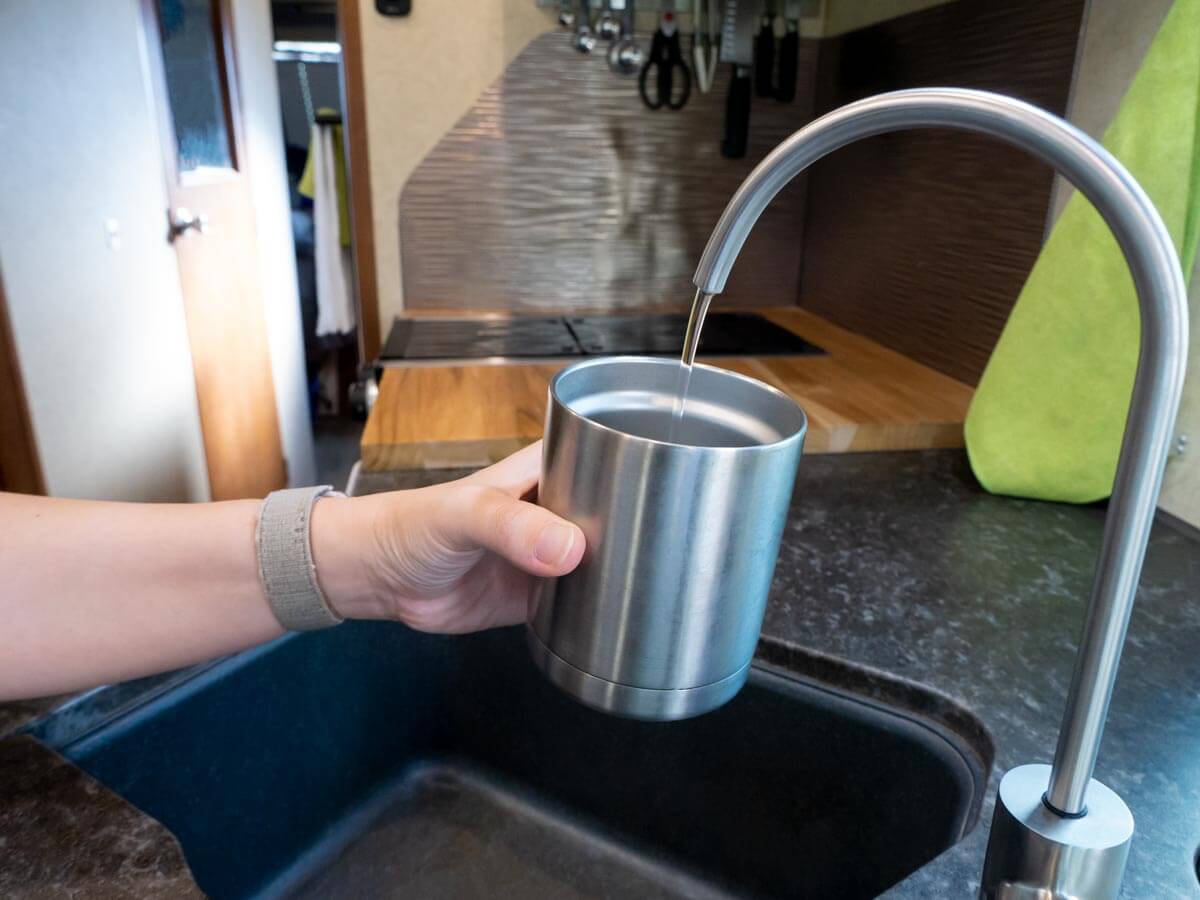
These advanced systems come with a bigger price tag, but if you are a full-time RVer, you will easily make your money back in purchased water. Plus, you’ll have clean water without feeling guilty about plastic waste!
12. DIY Maintenance and Repairs
Some of the most costly areas of RV living are repairs and maintenance of your RV and tow vehicle.
Learning to do basic upkeep will allow you to save more money over time and ultimately become better equipped to take care of your rig.
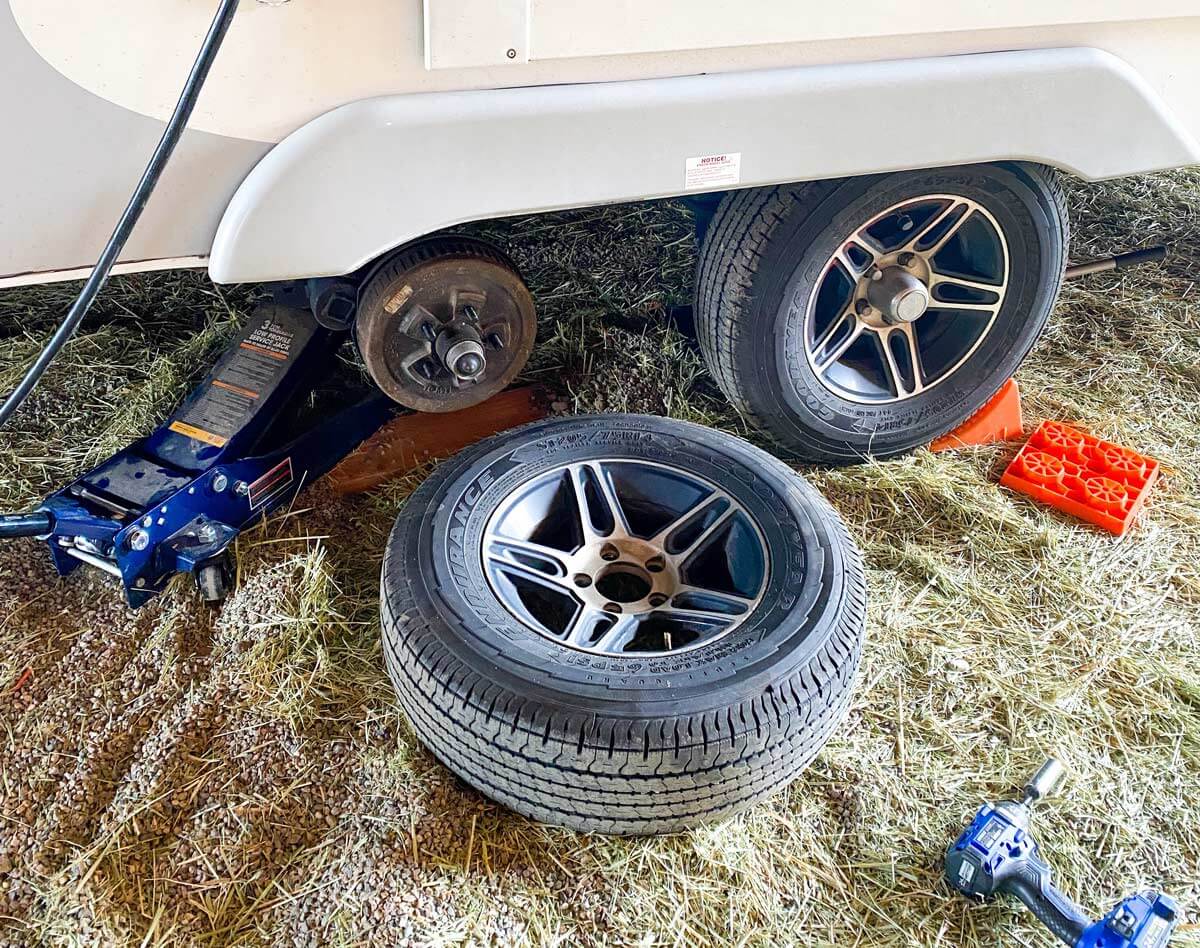
Here are some things you can learn to do yourself to save money on repairs and maintenance.
Ross and I have been able to save money on maintenance by tackling our oil changes and basic truck repairs. We also replaced a portion of our RV awning system and installed our lithium battery and solar setup.
PRO TIP: YouTube videos are an excellent source for learning how to fix just about anything on your RV or tow vehicle.
13. Embrace Cooking in an RV
We love experiencing the local cuisine at different places we travel to in our RV. But if you want to travel on a budget, you need to make sure eating out is more an exception than the rule.
Find recipes that work for your family and are easy to put together in a small space. Make eating at the campsite fun by cooking on the grill or over the fire regularly or setting up a griddle outside.

Get creative with your camping meals and make it a fun part of the RVing experience!
READ NEXT: For more on meal planning, outfitting your RV kitchen, and storing food, check out our 5 Tips to Master Cooking in an RV.
14. Find Affordable Internet Options
Whether you work from your RV or just want to check your email occasionally and stream a little Netflix, an internet connection is essential to your home on wheels.
The good news for full-time RVers is there are lots of options for finding internet on the road. Since campground wifi can be unreliable, we don’t suggest it as your only internet source, especially if you are working from the road.
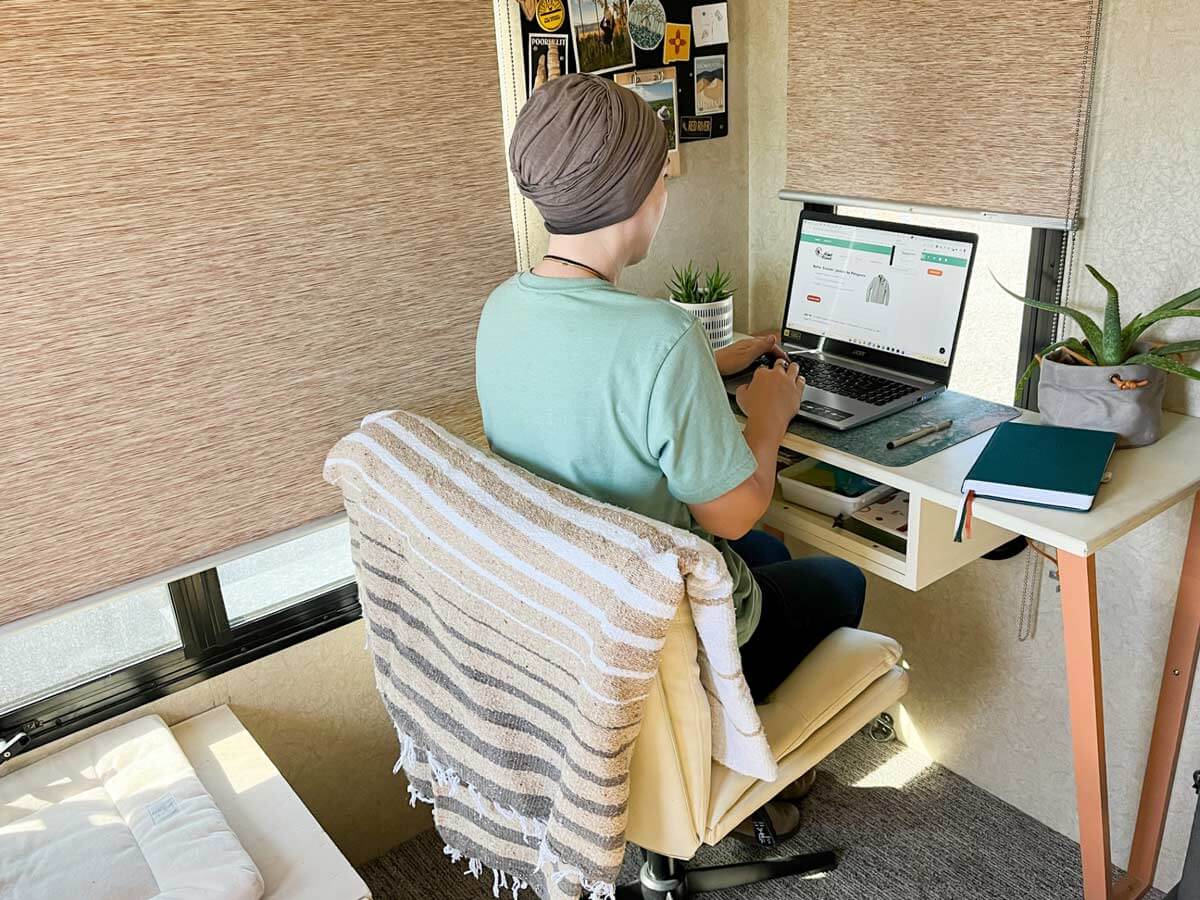
Here are some key strategies for reliable, affordable internet in your RV.
- Opt for a phone plan that includes hotspot data
- Invest in a router/modem device for the RV that allows you to use multiple prepaid SIM cards (this will give you the ability to use multiple carriers)
- Look into prepaid, digital wireless carrier options such as US Mobile or Visible (these are more affordable than the large cellular networks)
- Combine cellular data with satellite internet such as Starlink to get high-speed internet in remote camping destinations
HOW WE GET INTERNET: Ross and I use a combination of Visible phone plans with unlimited hotspots and a prepaid 100GB AT&T data plan to ensure we (almost) always have RV internet access.
There are many ways to combine data plans, cell phone plans, and even satellite internet to suit your needs.
This topic is often discussed in RV Facebook groups (including my Facebook group). I recommend searching those groups to get ideas for a variety of internet options and then researching what makes sense for you.
15. Opt for Free Things to Do
Before you roll into a new destination, do your research and come up with some free things to do in the area.
Free entertainment options are usually more accessible at State and National Park locations, where you can hike and bike on local trails, visit historical sites or national monuments, and enjoy time outside in the parks.
However, urban destinations typically have a lot of free activities, including free museum days (or discount days), a farmers’ market, botanic gardens, walking tours, and more. They might also have free events, including concerts, movie showings, and foodie and art events – the possibilities are many!
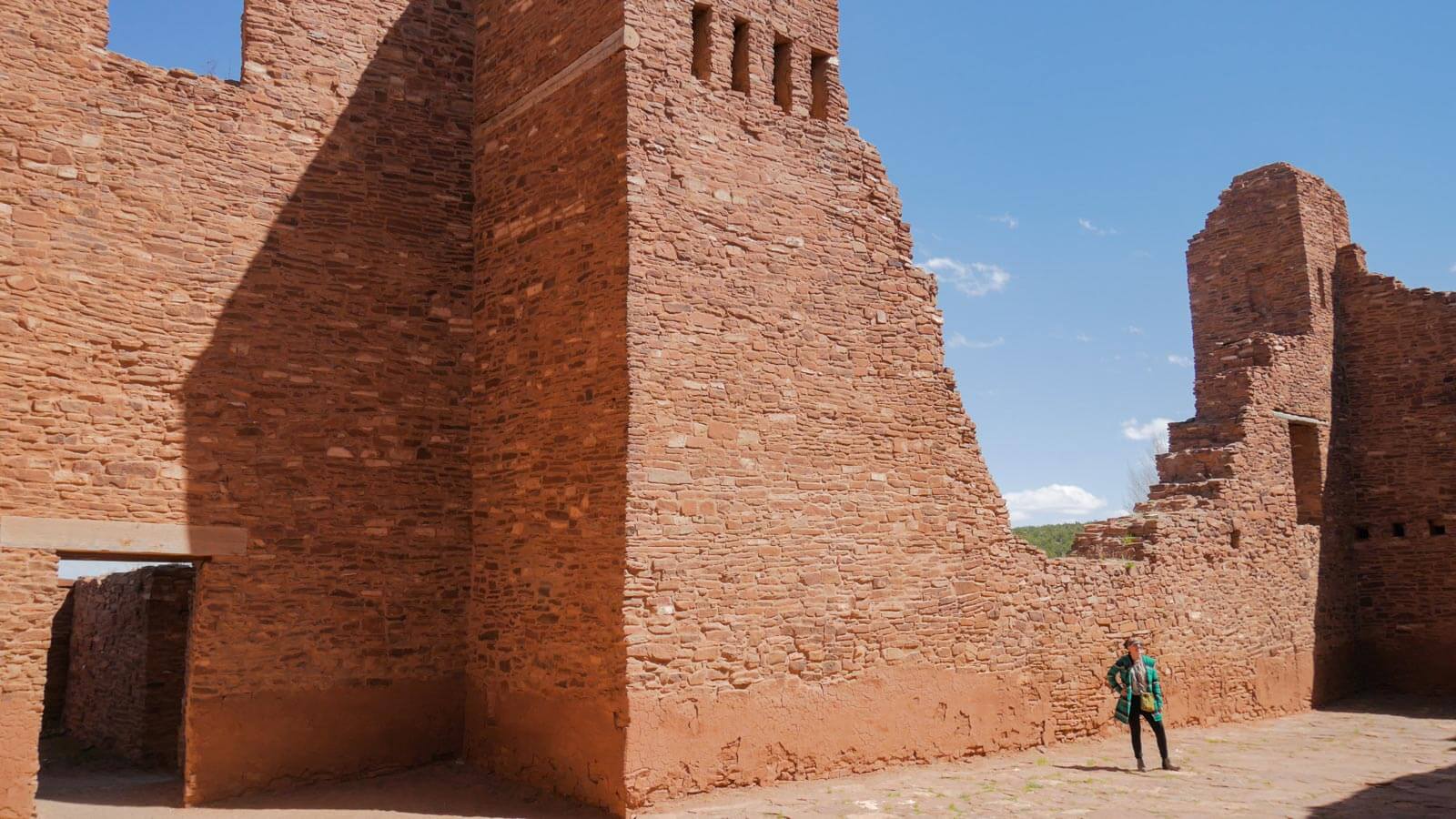
If you don’t know where to start, search the web for “free things to do in (insert city).” Or check the area’s Chamber of Commerce or tourism website for a calendar of events and local activities.
Don’t forget to bring along entertainment as well! A nice assortment of playing cards, board games, and yard games are perfect for nights full of fun too. Adventures with Tucknae’s, Janae, has a great post on their favorite games for the RV and how to organize them.
PRO TIP: If you plan to visit National Parks, consider signing up for the National Park Pass (American the Beautiful Pass), which will get your vehicle into all the national parks for $80 a year.
Cost of Full-Time RV Living on a Budget
Full-time RVing can be a great way to see the country on a budget. By being flexible and knowing where to find affordable camping and activities, you can minimize the cost of RV living while still enjoying the lifestyle.
The best way to come up with your full-time RV living cost is to start putting together a preliminary budget. Use the tips above and your knowledge of your personal financial habits to map out a budget that works for you.
These tools can help you get started with your RV budget:
- Use our RV Living Cost Calculator to estimate your monthly RV expenses.
- For an in-depth breakdown of the cost of RV living and our monthly expenses, check out this post – The Real Cost of Full-Time RV Living.
We sure hope these tips have given you some ideas for saving money while still enjoying the full-time RVing lifestyle!

Your Guide to Launching RV Life
Road Map & Checklist – Start Now!
Unsubscribe at any time. View our privacy policy.
Want to learn more about how to live in an RV?
For more on essential RV gear, the pros and cons of RVing living, and how to get out on the road, view our complete guide.
Like this post? Save it on Pinterest for later.
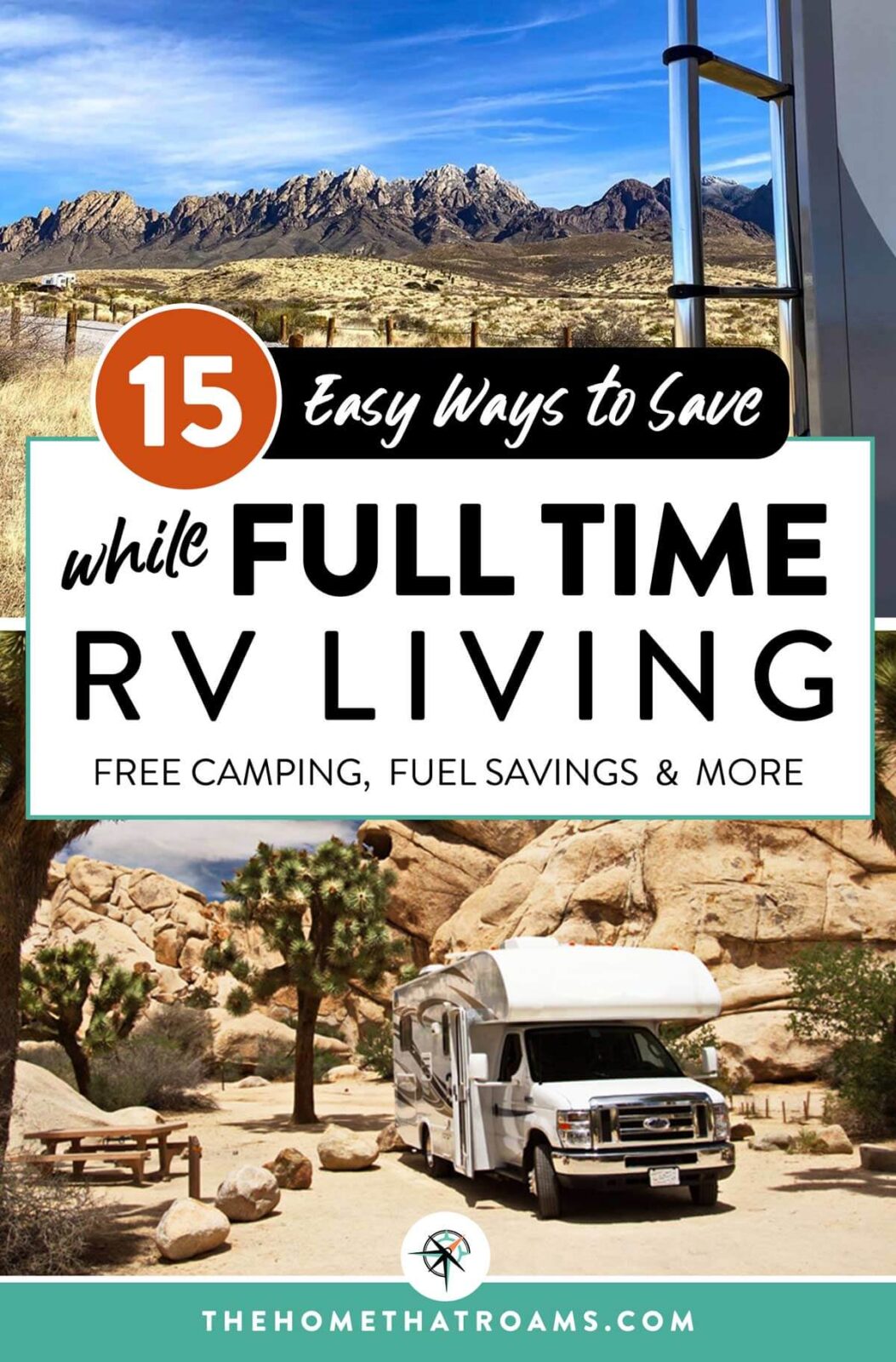
Or view our web stories.

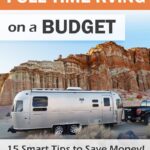
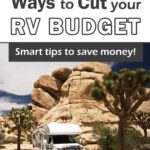
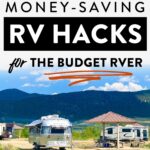
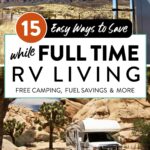
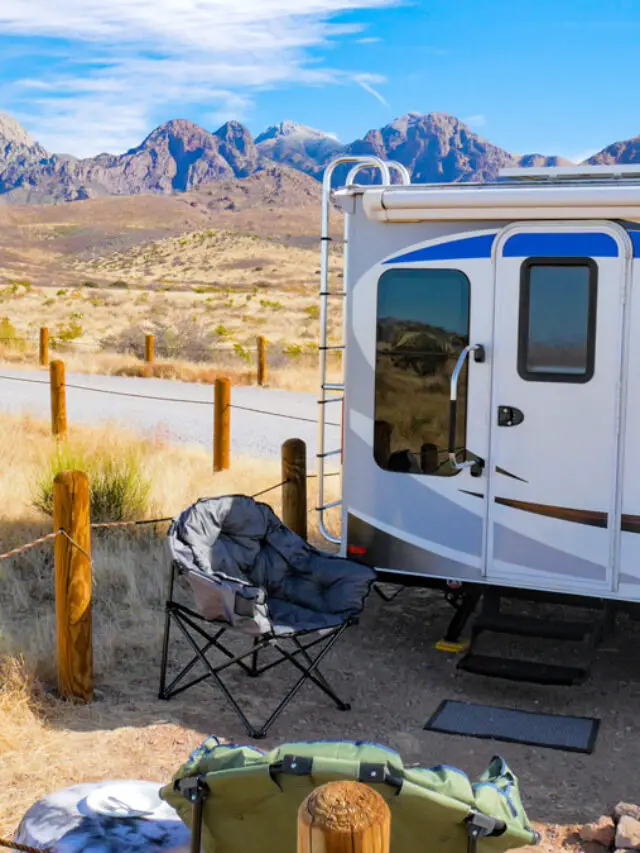
Thk you for all your hindsight, insight, and foresight on the RV lifestyle of living – very informative and important to know, we will definitely take this to heart have a blessed day 🙏
As a new RV owner with long term travel plans all this information will be a great help in learning the best way to travel full time!
Thank you!
No problem Angel, I’m glad you found it helpful. Best of luck in your RVing journey 🙂